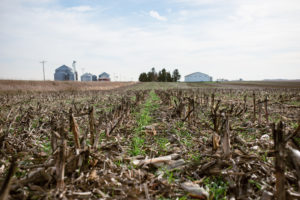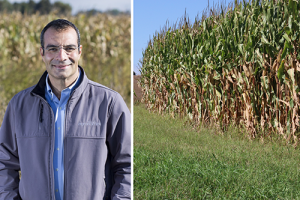By: 4R Plus
December 2019

Developing and managing environmental programs that help Iowa reach the goals set by the Iowa Nutrient Reduction Strategy (INRS) are top priorities of Shawn Richmond, environmental services director at the Agribusiness Association of Iowa. He encourages farmers to complete an assessment – at least annually – of their current nutrient management and conservation practices and consider if other 4R Plus practices might help them reach their production and sustainability goals.
He recognizes every farm is unique and is going to need a different set of solutions. “4R Plus is an important program for the state and to farmers as they consider the practices that can be used to reduce nutrient and soil loss,” he said. “It’s important that farms have a whole-system approach – that they consider the in-field and edge-of-field solutions that address nutrient losses.”
Richmond said it will take a combination of the 4Rs of nutrient management and conservation practices to meet the goals, which are to reduce nitrogen and phosphorus loading into Iowa waters from nonpoint sources by 41% and 29%, respectively.
When selecting practices, the farm’s topography is one consideration. “If you farm a rolling or steeply sloping landscape, erosion may be your greatest concern,” he said. “Things like terraces, no-till and cover crops help keep the soil in place.”
On flatter and tile-drained land, Richmond encourages farmers to consider practices that address nutrient losses. “Managing crop nutrients through the 4Rs – right source, right rate, right time and right place – has economic and environmental benefits,” he said. “Additionally, practices that help water infiltrate the soil, like cover crops and no-till, also reduce nutrient runoff.”
With a vast array of tools to choose from, Richmond encourages farmers to work with their agronomist or crop adviser to set reasonable goals and identify potential practices that can be incorporated into the farming operation. He also encourages farmers to visit their local USDA service center to learn about cost-share opportunities. “There are a lot of options for cost share to help farmers get started with a new practice,” he said.
Well-drained soil is critical to crop productivity, and Richmond recognizes tile work is commonly updated on farms. “The perfect time to consider an edge-of-field practice like a saturated buffer or bioreactor is when tile is being added or modernized,” he said. “These structures significantly reduce nitrates that leave farms, so it can make sense to add them at the same time tile work is occurring.”
Richmond wants all farmers to be part of the solution of reducing nutrient loss from fields. “Utilizing the 4R Plus suite of practices helps farmers address their productivity and environmental concerns,” he said. “To maintain the freedom of operation we enjoy in Iowa, farmers can look at the menu of options that are scientifically proven to reduce nutrient runoff.”



